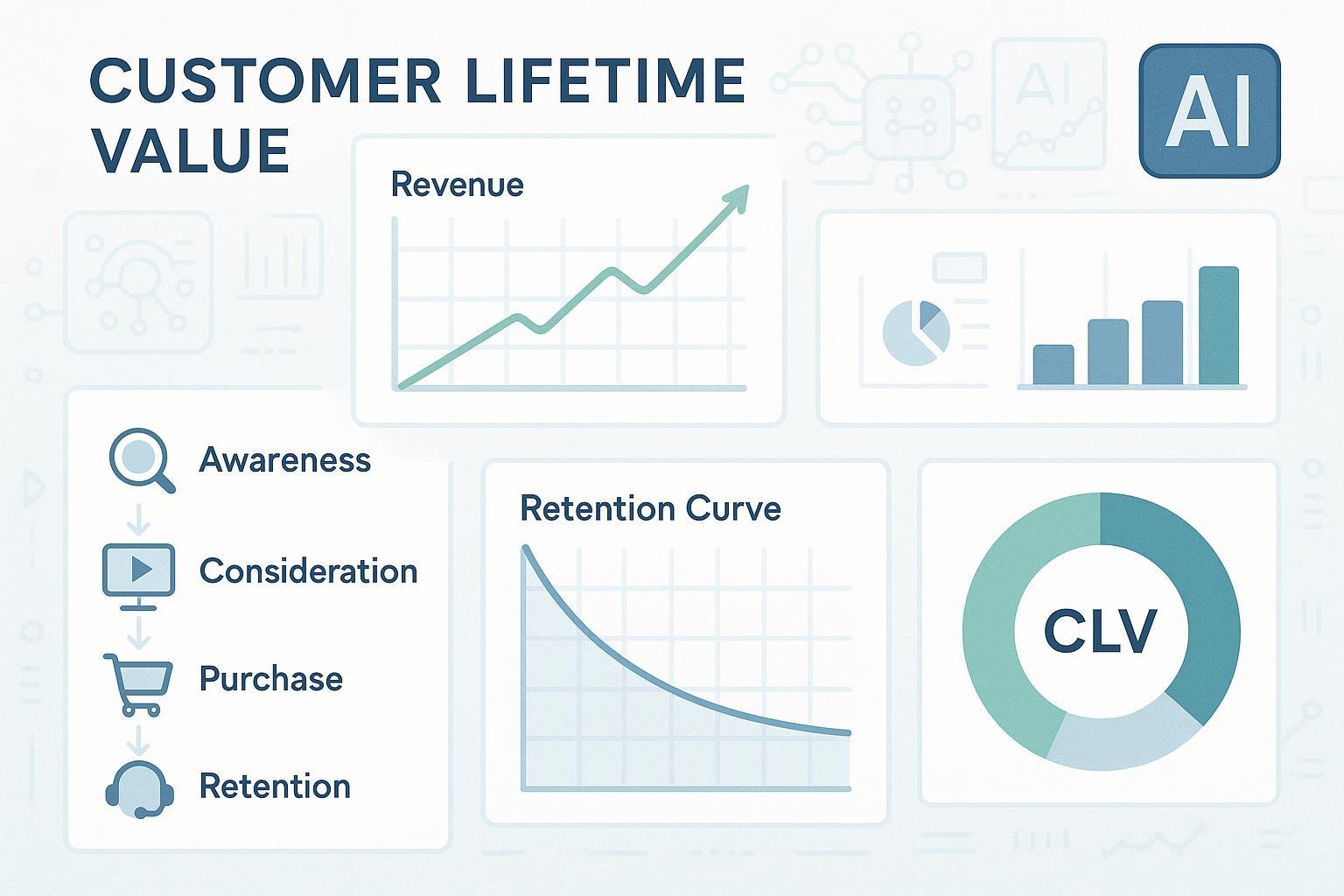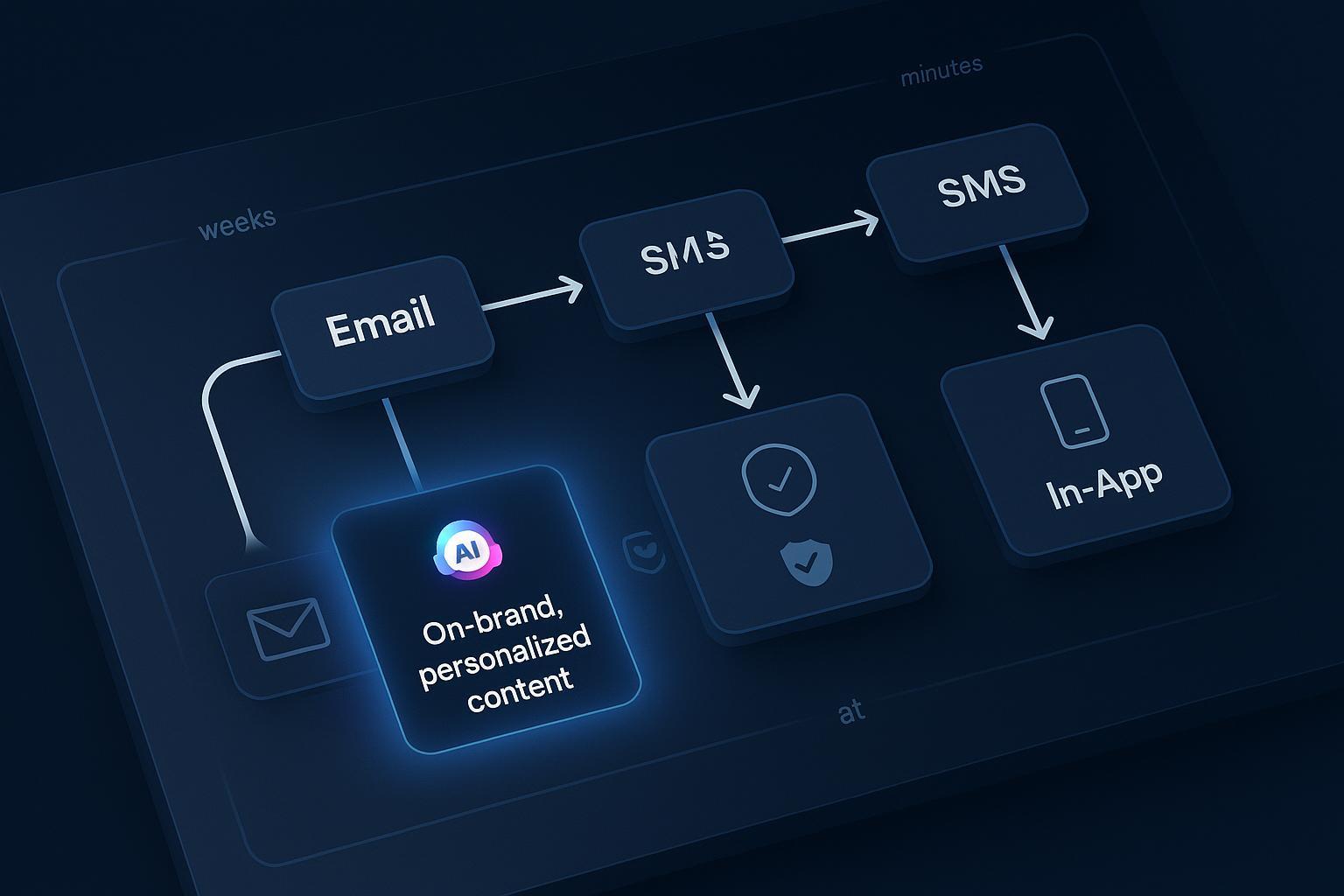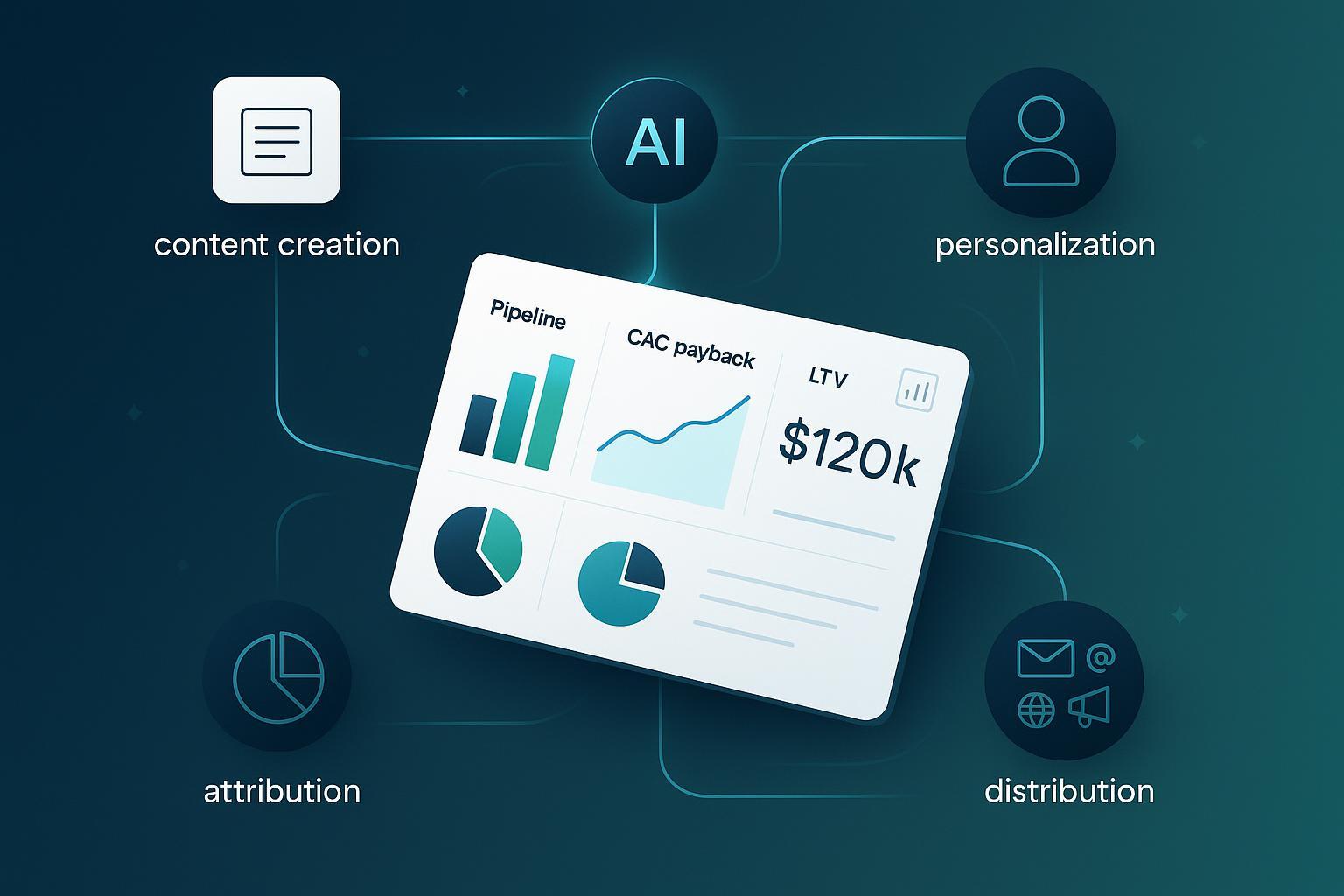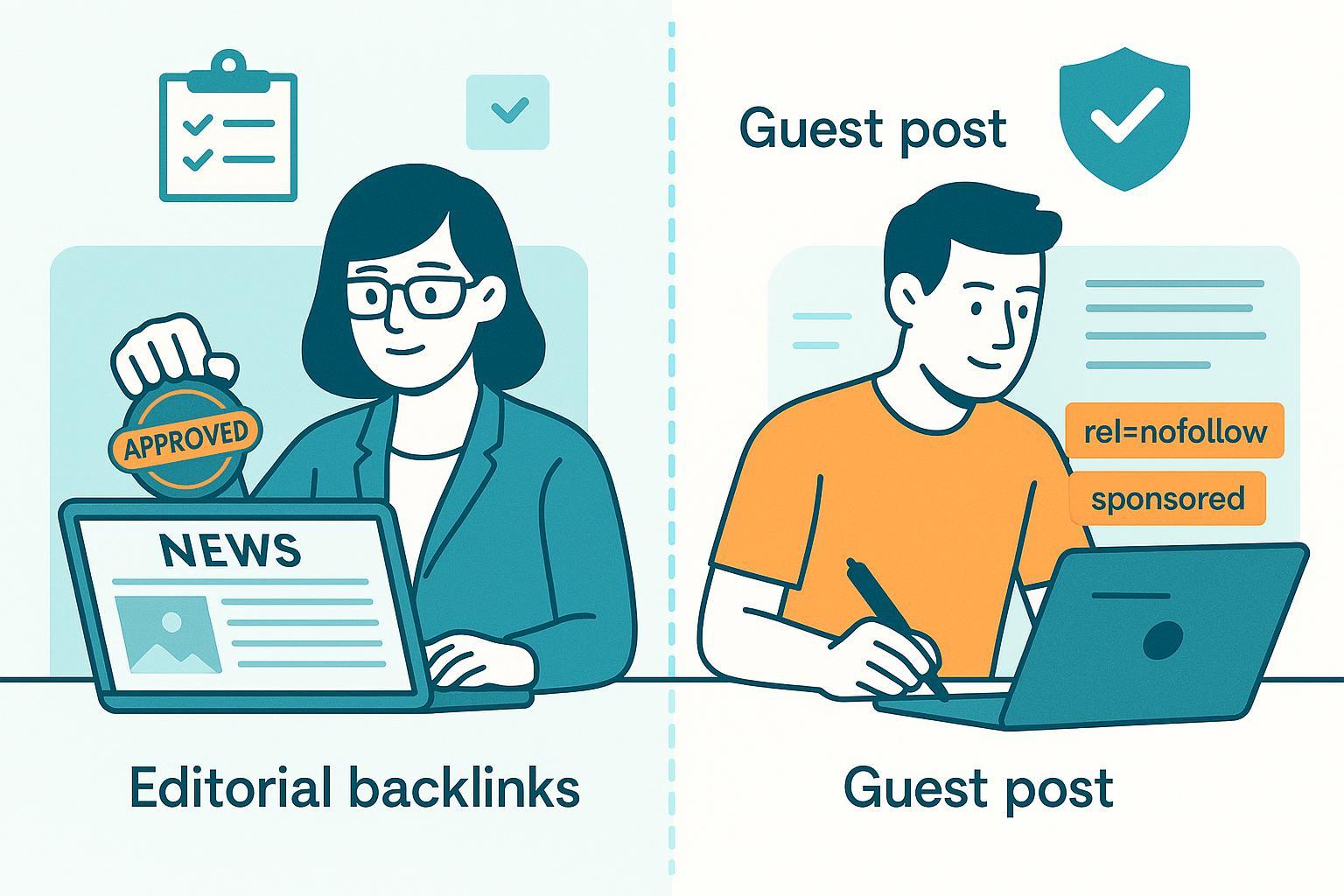What is Customer Lifetime Value (CLV)? Definition & Formula
Discover Customer Lifetime Value (CLV): definition, easy formulas, and vital digital marketing uses. Learn CLV's role, calculation, and key metric comparisons.


One-Sentence Definition
Customer Lifetime Value (CLV) is the total financial value a company expects to earn from a customer throughout their entire relationship.
Detailed Explanation
CLV is a cornerstone metric in digital marketing and brand management, guiding businesses to assess not just what a customer spends on a single purchase, but their cumulative worth over time. Unlike simple metrics such as average order value, CLV captures the whole customer journey, accounting for repeated purchases, retention rates, and even the cost of acquiring and serving that customer. Modern digital marketing strategies—especially those using AI-powered analytics—leverage CLV to optimize budget allocation, personalize campaigns, and focus efforts on high-value segments. According to NetSuite and Qualtrics, CLV synthesizes revenue, costs, and customer behavior into a single actionable figure.
Key Components and Formulas
CLV calculations vary by business model, but the classic formula is:
CLV = (Average Value of Purchase) × (Purchase Frequency) × (Average Customer Lifespan)
For subscription and SaaS businesses (often AI analytics-driven), a margin- and churn-adjusted formula is more relevant:
CLV = (Average Revenue Per User × Gross Margin) / Churn Rate
Advanced, predictive models use AI and machine learning to project CLV dynamically, ingesting real-time behavior and segmentation data for continuously updated insights. Historical CLV simply sums up actual earnings and subtracts associated costs, while predictive CLV uses data-driven forecasts.
Quick Formula Table
| Component | Meaning |
|---|---|
| Average Order Value | Typical spend per purchase |
| Purchase Frequency | Number of purchases per customer (period) |
| Average Lifespan | Time a customer stays active |
| Churn Rate | % of customers lost in a given timeframe |
| Gross Margin | Profit margin per customer |
Example (Ecommerce): A customer spends $50 per month, shops for 2 years, and enjoys a margin of 30%. CLV = $50 × 12 × 2 × 0.3 = $360.
Practical Applications in Digital Marketing
In digital marketing and AI-powered brand management, CLV supports:
- Campaign Optimization: Directing ad spend and content to audiences with the highest predicted CLV—often automatically with AI tools (Salesforce).
- Segmentation & Personalization: AI segments customers by lifetime value, allowing tailored incentives for high-CLV cohorts and win-back strategies for at-risk groups.
- Resource Allocation: Allocating more support, offers, or onboarding resources to segments predicted to generate higher lifetime value.
- Forecasting & Strategy: Modeling revenue trajectories and evaluating growth plans based on shifting customer mix and retention dynamics.
A landmark example: Streaming services like Netflix and SaaS brands leverage real-time predictive CLV to optimize recommendations, personalize offers, and reduce churn—sometimes boosting retention by over 20%.
Related Concepts & Metric Comparison
Understanding CLV is easiest when compared directly to other key metrics:
| Metric | What It Measures |
|---|---|
| CLV (Customer Lifetime Value) | Total revenue expected from a customer over time |
| CAC (Customer Acquisition Cost) | Total cost to acquire a new customer |
| ARPU (Average Revenue Per User) | Average revenue per period per user |
| Churn Rate | Rate at which customers leave |
| AOV (Average Order Value) | Average transaction size |
- CLV vs. CAC: Their ratio is vital: if CLV > CAC, the customer relationship is profitable—otherwise, marketing spend needs reevaluation.
- Retention Rate & Churn: Higher retention and lower churn boost CLV, underscoring the importance of loyalty marketing and excellent customer experience.
Further Reading & Resources
Explore related terms: Customer Segmentation, Churn Rate, Retention Rate, ARPU, CAC
A clear grasp of CLV equips digital marketers and brand managers to drive sustainable, data-informed growth, elevate customer strategies, and unlock long-term value in the AI-driven era.





